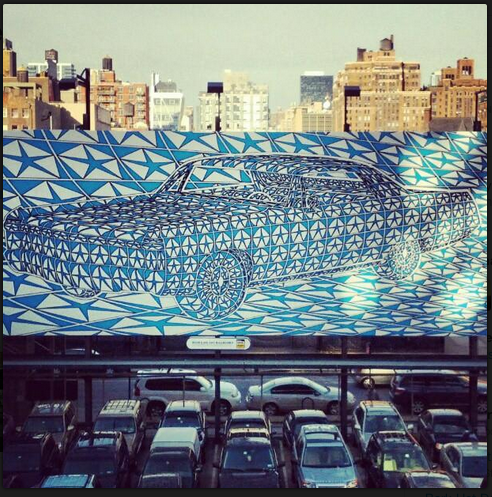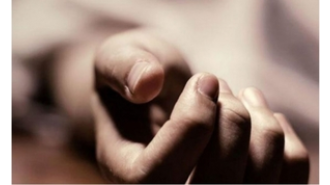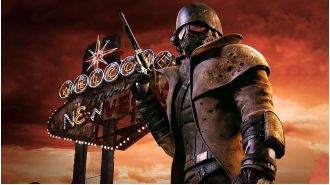Public Sharing vs Private Sharing
Alexis Madrigal has an interesting post up on The Atlantic about "dark social" vs "public social". Alexis makes the point that private sharing via email, IM, and other means drives more traffic around the web than public social services like Twitter, Tumblr, Facebook, Pinterest, etc.
Alexis makes the broader point in the piece that the Internet has always been social and that the emergence of these newer social platforms is overblown. I agree with Alexis that "dark social" is a very powerful driver of traffic, but I think Alexis is missing a big point about the power of public sharing.
Public sharing opens up the share to all sorts of interesting engagement that is just not possible in "dark social" systems.
I will give an example of something that happened yesterday to make my point. I went a walk on the High Line yesterday afternoon. As I was headed north at the 10th Avenue Ampitheater, I came across this huge billboard art installation:
I was smitten with this piece and spent five or ten minutes taking it in. Then I snapped a few photos of it on my phone and posted them to Instagram, Foursquare, and Tumblr. I was curious about the artist and the piece but didn't really do anything to figure out who had created it.
This morning as I was looking through Tumblr, I saw that my post of the art installation on Tumblr had gotten quite a few reactions, including this reblog from Kevin Slavin. Here's what Kevin had to say about it:
I’m so excited to see this wash up in Fred’s feed and to see others responding to it.
It’s not labeled anywhere and there’s no obvious way to know, but this is an old piece by one of my two great early mentors: Thomas Bayrle.
Looking back, I realize I’ve blogged about him frequently in the last few years including Five films, Documenta, an old piece I helped him with, a quick reference in a post by Greg, and his inspiration in an old essay for Brockman.
There are so many things to know that give this piece additional gravity. To know, for example, that this was made by hand, back in the 70s, no computers, and that the distortion of the logo was done by stretching latex with pins and tracing it.
To know that Thomas was a textile designer before he was a full-time artist. To understand the direct connections between Thomas, Peter Roehr and yes, Andy Warhol, who had similar predilections and procedural approaches to repetition, all at the exact same time.
Twenty years ago exactly, I was an artist working in Thomas’ studio in Frankfurt, and it’s no exaggeration to say that he taught me how to see. Like any great artist, Thomas is an astronaut, and he’s brought back images of places we might someday get to.
That this car has arrived some 40 years after he made it… well, that’s because we’re slow. No matter how fast the network gets, no matter how fast the market moves, they’ll never catch up to artists who have all their sensors in play.
How awesome is that? Now we know who the artist is – Thomas Bayrle. And we know when he made this work, we know how he did it, and we know that Kevin studied with him.
Public sharing of social media made all of that happen. Sharing a picture of the art installation with my wife and/or kids via gmail, sms, kik, or some other form of private sharing could not have and would not have produced this information. And even if it had, it would not have produced it publicly.
So say what you will about "dark social" and private sharing. I'll take brightly lit public social any day.







